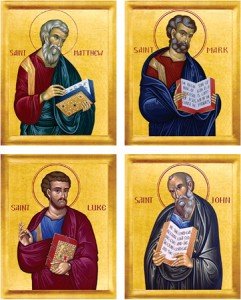 I have already shared something about the similarities that exist within the three Synoptic Gospels. I would now like to share something about the dissimilarities.
I have already shared something about the similarities that exist within the three Synoptic Gospels. I would now like to share something about the dissimilarities.
Some events are recounted by only two of the Evangelists, others are proper to only one. Even then, the two accounts of the same event differ at times. For example, Matthew and Luke give the history of Jesus’ infancy, whereas Mark does not. Yet these two accounts of Matthew and Luke differ considerably. This holds true for the genealogies of Jesus that they present. Also Matthew and Luke share the same three temptations of Jesus but the order is changed. Even the reports of the Lord’s resurrection present no uniform traditions. One would think that there would be a uniform presentation of this most important event.
Although in general there is agreement in the arrangement of the Gospel materials, it must be noted that there are some differences. Where one author groups the material together in one place, the other scatters it throughout his work. The parable section is common to all three, but each has a different number of parables. Although Luke and Matthew share many of Jesus’ sayings not found in Mark, the sayings are organized in a different fashion. In Matthew the sayings are grouped in five great discourses of Jesus (43:2,16) whereas in Luke much of this material appears during Jesus’ long journey to Jerusalem (9:51-18:4). The two best examples of this are the number of petitions to be found in the Our Father (Matthew 6:9-15; Luke 11:21-4); and the number of the Beatitudes (Matthew 5:3-11; Luke 6:20b-22).
Luke follows Mark’s over-all order much more closely than Matthew does. Perhaps the best way of summarizing the content similarities and dissimilarities and also the arrangement among the Synoptics is to give a detailed comparison of Luke and Mark. Careful study of this detailed comparison will help the reader to understand the different method of the two Evangelists and show him the complexity of the interrelationships.
The Synoptic Problem as we know it did not arise until the middle of the 18th Century. Even then, thorough investigation of the problem did not begin in earnest until the early 19th Century. The early Church Fathers did not treat this question explicitly. Augustine was aware of some of the difficulties. He actually wrote a book on the literary relationships of these three Gospels. More to follow!
